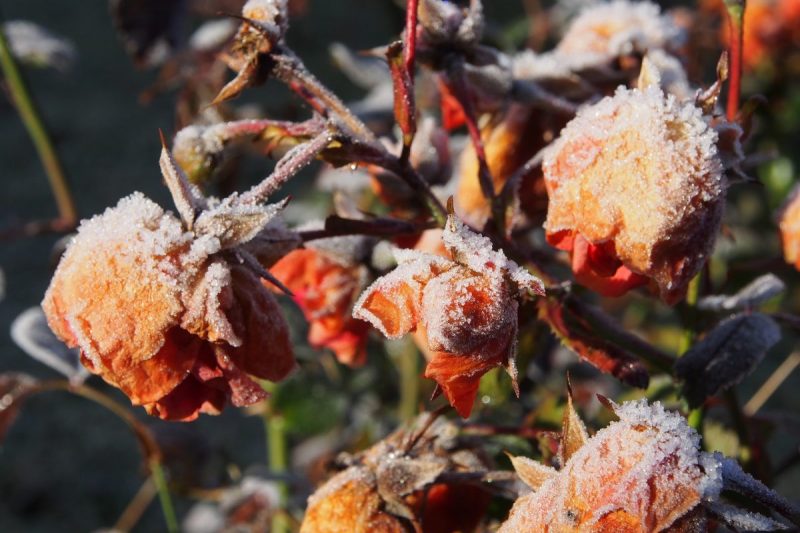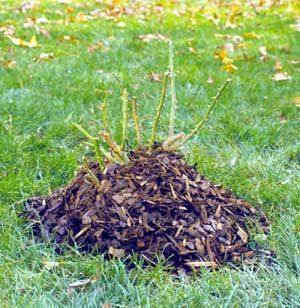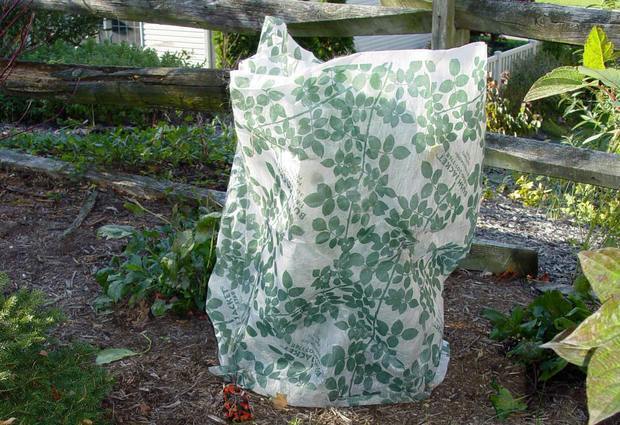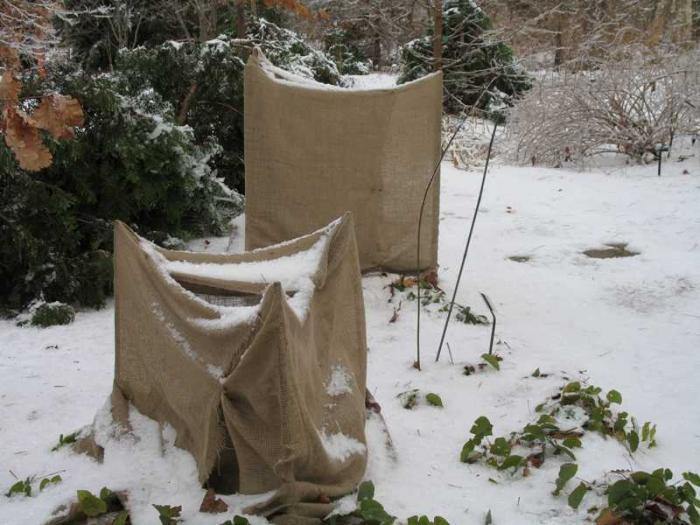Protecting roses from frost

Roses are in most cases frost-sensitive plants and therefore need to be protected in winter by covering them with soil. In the hilly and mountainous regions, roses are buried at the beginning of November, and in the lowland regions, this procedure can be done even later. In any case, the operation must be completed before the appearance of temperatures that drop below -4 degrees Celsius.
Dwarf roses (shrubs) are more sensitive to low temperatures than semi-climbing or climbing roses.
Regardless of the category to which they belong (dwarfs, with trunks, semi-climbing, or climbing), and the region in which they are found, roses must be protected in winter by mulching or covering with soil. Before being covered, the roses are lightly pruned, which consists in shortening the branches that are too long, removing the broken or dry branches, as well as the leaves that are left on the branches.
Mulching
The mulching consists in covering the branches at the base of the bush with special material (straw or bark).
The mound should not exceed 25-30 cm in height, and at the base, it should cover the bush well.
The semi-climbing and climbing roses have to be subjected to the same treatment, respectively the branches at the base must be mulched. In these categories of roses, the mound can be made taller (40-50 cm) and wider at the base.
For roses with a trunk and crown, depending on the elasticity of the trunk, two methods of protection can be applied.
The first method
In the case of the first method, when the trunk of the plant can be easily bent, the crown has to be buried in the ground in a 20-25 cm deep hole that has a width equal to that of the crown. For stability, the base of the crown has to be fixed to the ground with a hook. Bending the trunk and fixing the base of the crown is a delicate operation and must be done very carefully, to avoid breaking the trunk or detaching the crown from the grafting point. The crown must be covered after it has been previously cleaned (as in the case of dwarf bushes) and tightened with raffia if it is too voluminous. The mound that forms must not exceed 20 cm, taking into account that a portion of the crown is buried.
The second method
The second method is applied when the trunk has reached a thickness that no longer allows it to bend. In this case, the crown branches have to be wrapped with hay, straw, or dried leaves, then the crown must be covered with light materials through which air can penetrate (sackcloth). The cover has to be tied at the base of the crown, including the grafting point. During the winter, the crown cover should be checked periodically so that it does not get loose, break or become too heavy because of snow deposits. In the latter case, in order to avoid any bending or breaking of the trunk, it is good to use tutors, which, if placed in the northern part of the trunk, represent an element of protection against blizzards.
In mid-March, if the weather allows it, or towards the end of the month, roses should be taken out from their mounds or the covers should be removed. Overwintering is well tolerated only by roses that have strong, well-wooded stems and branches, i.e. those that have completed the process of growth and development and have entered a state of dormancy.
Dry frosts are not as dangerous for roses as the humidity of snows/blizzards that causes mold, rot, and ultimately plant death.
Mulching the base of the stem is also necessary for other ornamental shrubs, such as hydrangea, peony, rhododendron, etc.
Tips on protecting other plant species from frost
In addition to roses with trunks and crowns, covering the crown is also practiced during the early months/years of other plants. Thus, some species of Magnolia, when planted in regions with harsh and prolonged winters, need to be protected by covering the crown. This operation is all the more difficult as the volume of the crown is larger. The covering is made with pieces of mats or tarpaulins, after previously reducing the volume of the crown by tightening and tying the branches together (not by pruning). Considering that the Magnolia branches are brittle, both the operation of tightening them and the covering of the crown, must be done with patience and caution.
During the winter, the cover has to be checked, cleaned of snow or frost, so as not to put pressure on the inner branches, which could break. Other deciduous shrubs that suffer from frost, but, due to their creeping growth cannot be protected by mulching or covering the crown, and have to be protected from frost by covering them with a layer of dried leaves.
The thickness of the cover varies depending on the region, the sensitivity of the plant, and the nature of the material with which the cover is made.





























































































































































































































































































































































































































































